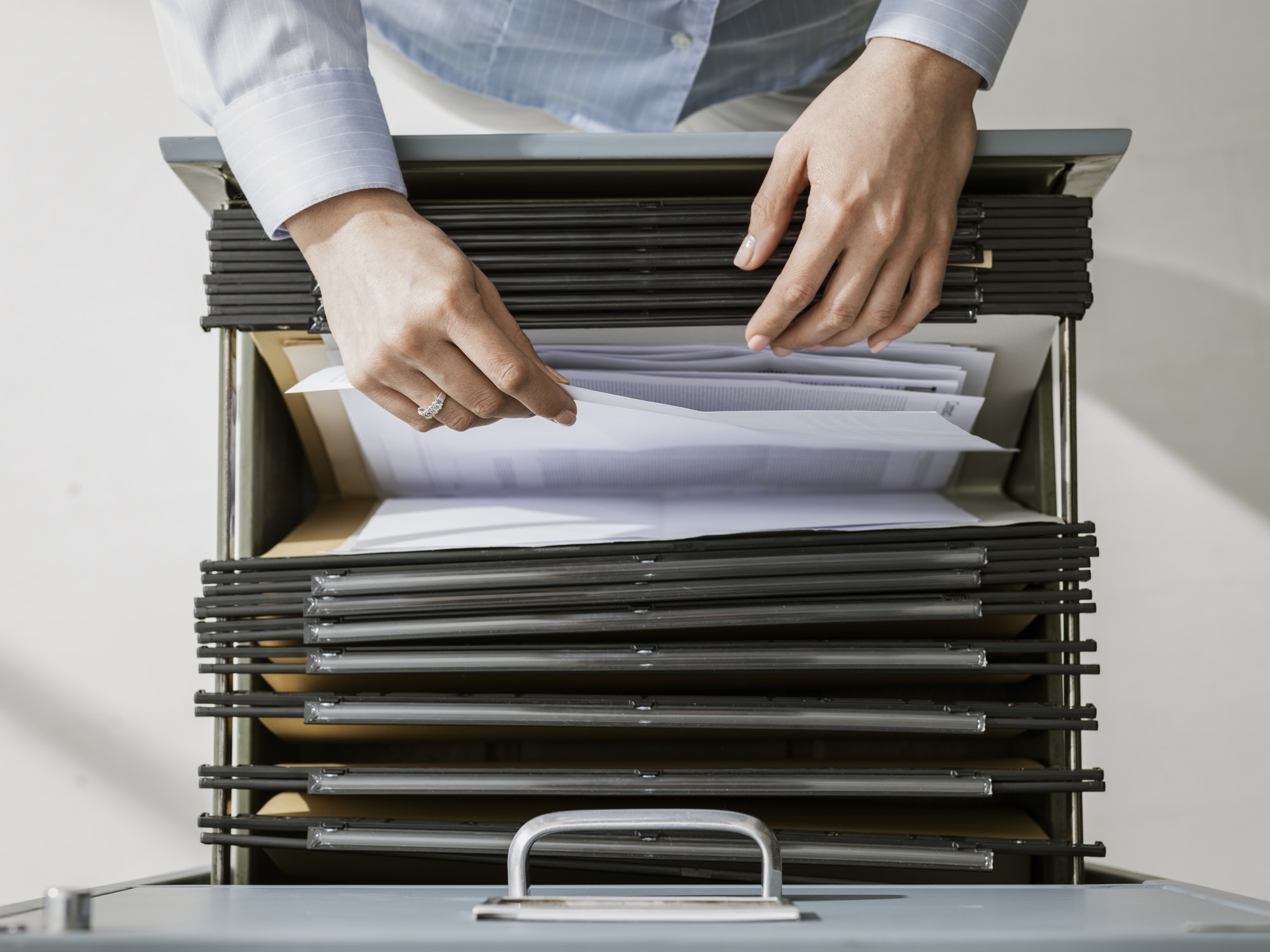When it comes to taxes, spring cleaning takes on a whole new meaning.
Taxes seem to invite clutter. Tattered shoeboxes and bulging envelopes stuffed with hundreds of slips of paper are staples of tax humor.
But there’s a serious side to all that mess. You need a year’s worth of financial documents to fill out your tax return. And before one tax year ends, the next tax year—with its own set of essential records—has already started.
One way to avoid total confusion is to keep all your records in one place. As they arrive, or at least as often as once a month, take the time to organize them by category, date, or whatever works for you.
DOCUMENTING IT ALL
Certain documents are essential for completing your tax return. W-2 forms. If you’re working full- or part-time, you should get a
W-2 form from your employer no later than the end of January. The form reports what you earned for the year, what was withheld for income taxes, Social Security and Medicare, and any additional deductions.
1099 forms. If you’re a freelancer, you’ll get a 1099 from each job, reporting the amount that you were paid. If you’re investing or saving, you’ll get a 1099 from each financial institution where you have an account. For instance, you’ll get a
1099-INT to report interest you earned and a 1099-DIV to report dividends on stocks and mutual funds. Other 1099 forms report government payments, income from royalties or rentals, and so forth.
- The more you earn and the more complicated your financial situation, the more records you need. Here’s a potential list: Confirmations of purchase and sale prices of stocks and bonds that you sold during the year so you can figure your capital gains (or losses)
- Statements of interest you paid on student loans, mortgages, and investment accounts
- A statement confirming the contribution you made to a deductible IRA
- Records of uninsured medical and dental expenses if the total may qualify for deduction
- Records of state and local taxes you paid
- Records of expenses you paid for business travel or volunteer work for which you haven’t been reimbursed
Usually these records go back into your files after you’ve completed your tax form. But some experts suggest that if you have unusually large adjustments to income or itemized deductions that might trigger IRS questions, it can make sense to attach copies of your supporting documents.
If you’ve sold any investments, you should keep proof of that sale for at least three years. And you should keep records of your contributions to tax-deferred and tax-exempt plans as long as there’s a penny left in them. In all other cases, just use your best judgment. If you think a receipt or check is relevant, then there’s no harm in holding onto it for awhile.
ENDLESS SLIPS OF PAPER
The IRS recommends holding onto Copy C of your W-2 form until you start receiving Social Security benefits. That’s so you can prove what you’ve earned and where you’ve worked if you think you’re not getting the right benefits. That may be overkill, though. It’s much easier to open a MySocialSecurity account at www.ssa.gov. That way you have access to all your Social Security records, including amounts you’ve contributed. If you check each year to be sure the new information is accurate, and get it corrected if it isn’t, you shouldn’t need to keep 50 years of W-2 forms.
HOLD ON!
So how long do you need to keep your tax return and the back-up documents after you file? In most cases, the IRS recommends at least three years. That’s how long they have to audit, or examine, your return. But be sure to check your state’s tax regulations, since some states have different audit rules.
You should keep your federal and state tax returns, as well as your W-2s, 1099s, and other important forms, in a safe place. In fact, if you’ve got a safe deposit box, you might want to store your actual returns there and keep copies at home.
There are a few tax-related documents you should hold onto indefinitely. For instance, if you’ve bought a home, you need to keep proof of what you paid for it and any money you spent on renovations. They can help reduce your capital gains if you ever sell. The same goes for any property you’ve inherited or received as a gift.
SHEDDING THE EXCESS
If the need to be neat gets overpowering, there are documents you can get rid of.
When you get your W-2 from your employer, you can discard your paycheck stubs for the previous year. You also don’t ] need to worry about keeping quarterly investment dividend or interest statements once you get the 1099 that reports them.
You don’t need telephone bills, utility bills, or similar receipts for tax purposes, but you do want to check each bill as it arrives (or online) to be sure your last payment was credited to your account.
Banks used to suggest you keep your account statements and cancelled checks for several years. But since banks have moved to online records, that’s no longer necessary, which frees up some file space.




